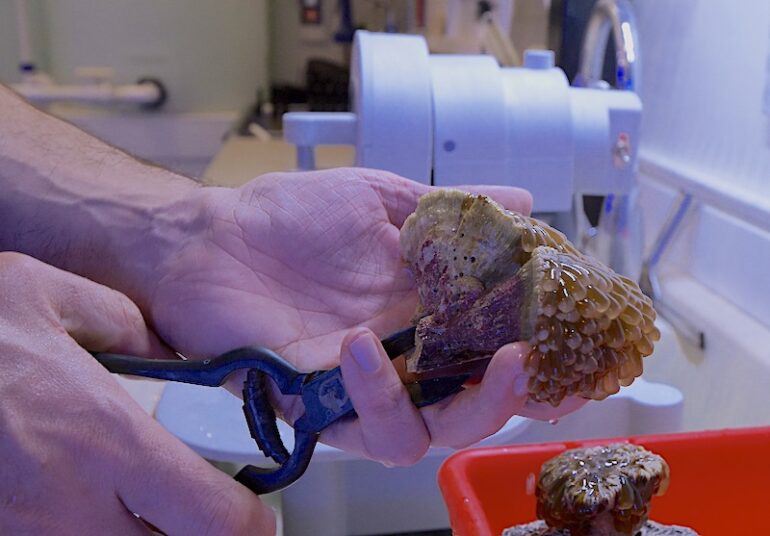If you’ve been paying any attention to the coral scene lately, torch corals are smokin’ hot, like so hot you can’t touch a single head of one for some serious coin. Although Euphyllia glabrescens has been a mainstay of the reef aquarium hobby for decades, all of a sudden everyone is paying attention to them, and especially the fancy varieties that suddenly became very scarce.
It happened on two fronts, with Indonesia shutting down and the once abundant Australian gold torches almost drying up, the demand for Aussie gold torches and Holy Grail or Dragon Soul Indo torches went through the roof. Almost overnight the cost of a single polyp of Australian gold torch that once sold for $60 to $80 depending on your market went up to $200 or more depending on the size.
Besides scarcity and coloration, the fun thing about torch corals is how long and flowing their tentacles can be, and the contrasting colored tips makes torch corals some of the most eye catching in terms of movement. We don’t believe there’s any real consensus on which Glabs develop long tentacles and which varieties keep them short, although Indonesian and West Australian strains tend to develop the longest tentacles, easily surpassing 4 inches long.
We were lucky enough to spot a nice showy colony of classic short tentacle, Australian gold torch coral while at ReefStock Australia a couple of months ago and now have more than a dozen polyps of this variety alone to work with and spread among our tanks. In this video we do some light grooming of the two massive chunks the colony was split into for shipping, separating the corallites so that the polyps and tentacles have more room to expand, and hopefully also grow.
Hopefully you enjoyed this hands-on, close up and fragging video of one of the hobby’s most desirable corals. If you desperately want some torch coral but can’t stomach the current asking prices, don’t despair because the coral hype cycle waxes and wanes and it’s only a matter of time until there’s more availability, less demand, and/or the hobby refocuses its attention on the next group of white-hot corals.



